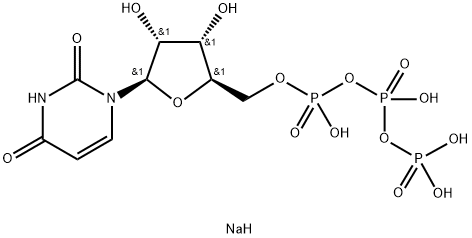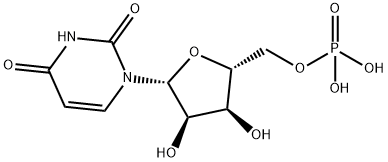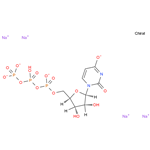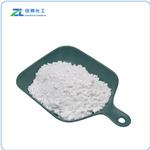Description
Uridine-5'-triphosphoric acid trisodium salt, also known as UTP, is a polyphosphate analogue of uridine that is used in the synthesis of agonists at the G-protein-coupled P2Y receptors.
Chemical Properties
White crystalline powder
Uses
Uridine-5'-triphosphoric acid trisodium salt is a polyphosphate analogue of the nucleoside uridine used in the preparation of potent and selective agonists at the G-protein-coupled P2Y receptors.
Uses
P2Y receptor agonist.
Application
Uridine-5'-triphosphoric acid trisodium salt solution can be used to increase intracellular Ca2+ levels in rat primary tracheal epithelial cells. It is also used as a nucleotide substrate to analyze the activity of MutT homolog 1 (MTH1).
Biochem/physiol Actions
Uridine-5′-Triphosphate?(UTP) is a cytosolic nucleotide component of nucleic acids. It serves as a signaling molecule in the extracellular space. Uridine-5′-Triphosphate?(UTP) is involved in various pathophysiological responses in the nervous system.?UTP also plays a major role in the regeneration process.
in vitro
Uridine triphosphate (UTP) (0, 10, 100, 250, 500, and 1000 μM; 2, 4, 6, 8, 10, and 12 h) trisodium salt enhances RT4-D6P2T cells migration and wound repair. Uridine triphosphate trisodium salt induces Schwannoma cell migration through the activation of P2Y2 receptors and the increase of extracellular MMP-2 activation and expression. Uridine triphosphate (UTP) trisodium salt (Uridine-5'-triphosphoric acid trisodium salt) evokes MAPK phosphorylation in a biphasic pattern MAPK phosphorylation, with an early transient phosphorylation 5 min after treatment and a late and sustained phosphorylation that appeared at 6 h and lasted up to 24 h.





